Farid Kia
Unveiled
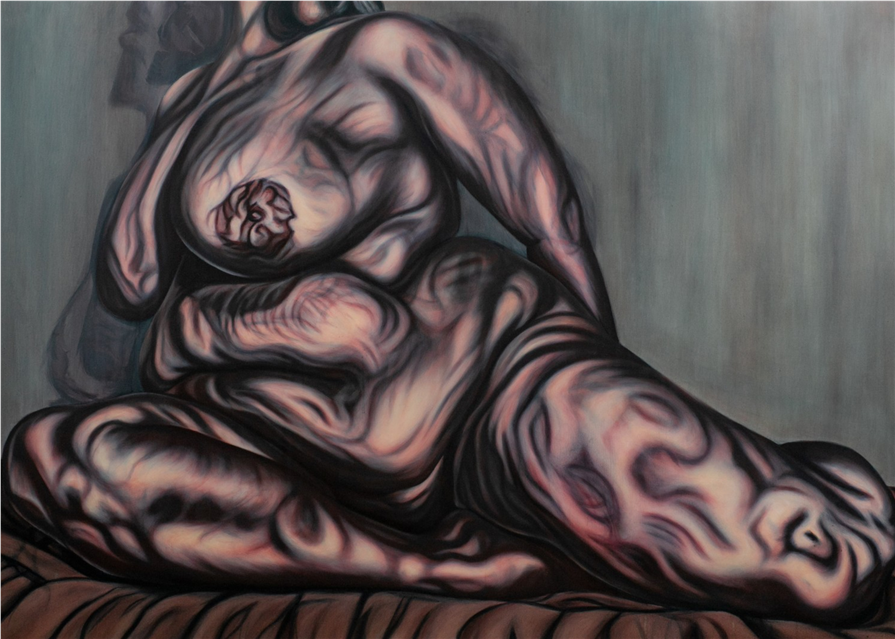
Farid Kia, 2022
Untitled, 'Unveiled' series
oil on canvas, 66 x 95 1/4 inches
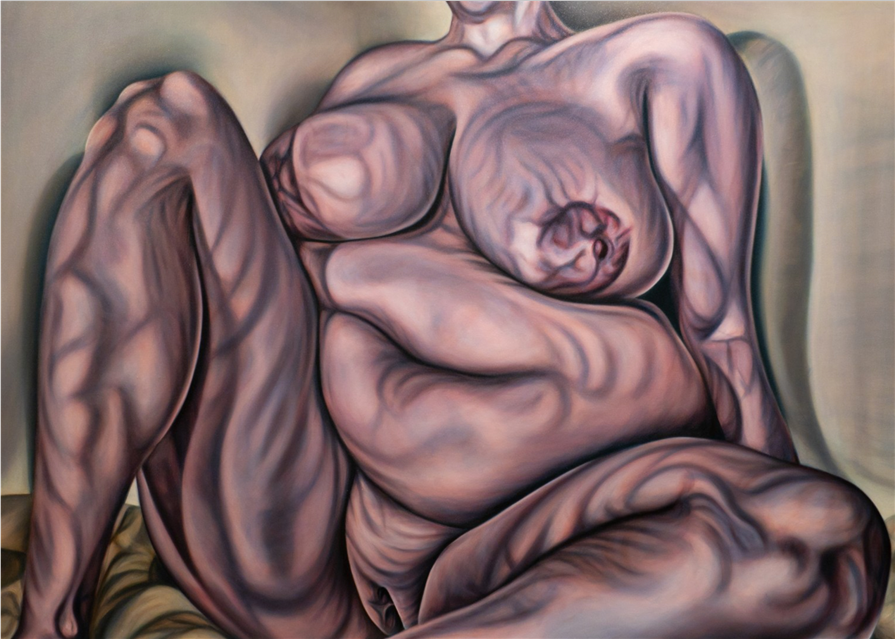
Farid Kia, 2022
Untitled, 'Unveiled' series
oil on canvas, 66 x 95 1/4 inches
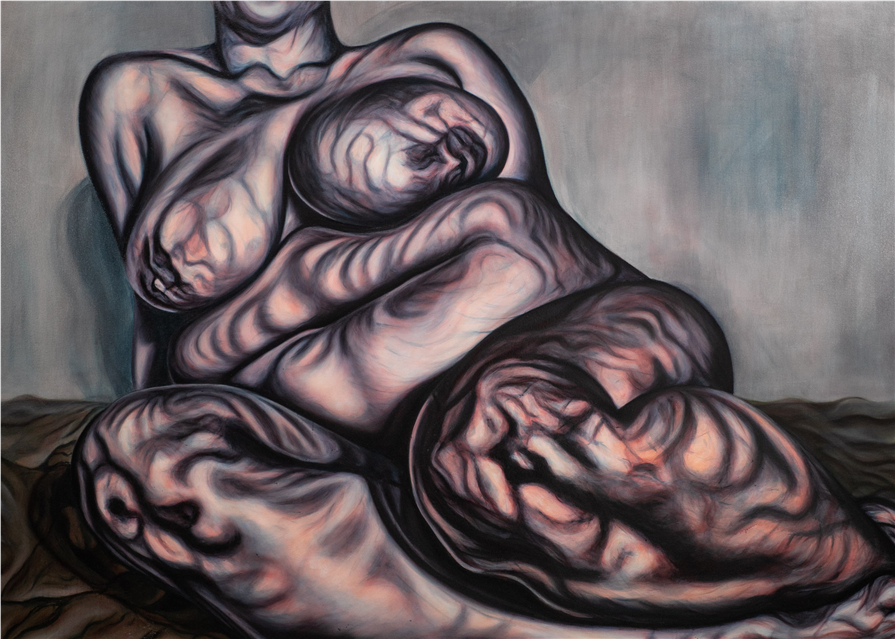
Farid Kia, 2022
Untitled, 'Unveiled' series
oil on canvas, 66 x 95 1/4 inches
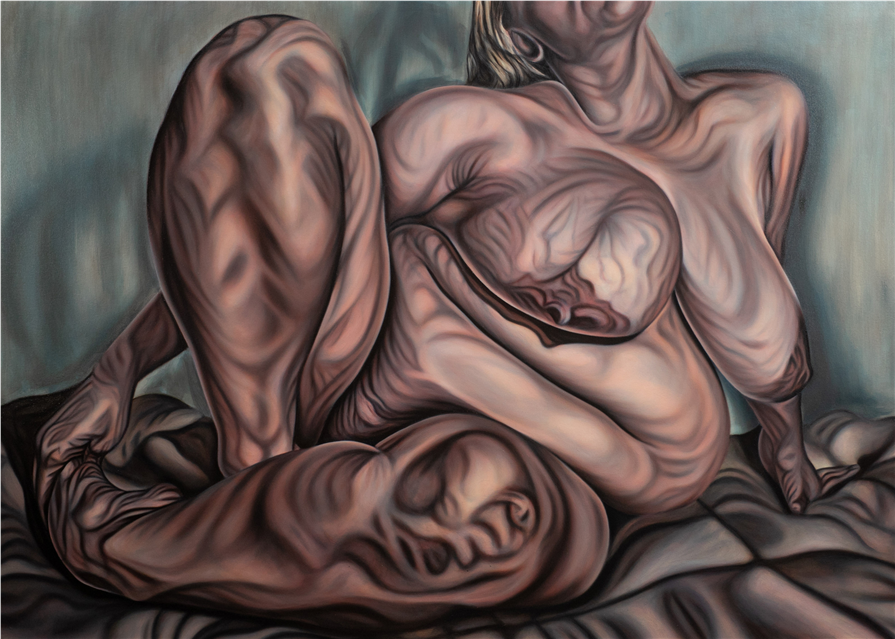
Farid Kia, 2022
Untitled, 'Unveiled' series
oil on canvas, 66 x 95 1/4 inches
PRESS RELEASE
“Forget not that modesty is for a shield against the eye of the unclean. And when the unclean shall be no more, what were modesty but a fetter and a fouling of the mind?”
–Khalil Gibran
In his hauntingly evocative new series, Unveiled, Farid Kia explores the female form in its most raw and unfiltered state through five monumental nudes in nontraditional poses, decapitated by the paintings’ bold framing. In essence, Unveiled positions the body itself as the subject of portraiture and thereby signals a wish to have the viewer reflect on the aesthetics of the flesh in all its symbolic registers. Kia’s art is thus reminiscent of Jenny Saville or Lucian Freud, but his exaggerated palette and near-marbleized subjects create an otherworldliness that distances him from these interlocutors.
In contrast, Kia’s nudes are marked by a distinct compression of space and surreal coloration that strikes one as a kind of inversed Mannerism. Like his distant antecedent, Kia’s art seems invested in exaggeration over description, hinting at a deeper spiritual contemplation similar to the sort that drove Mannerism’s strong taste for idealization. To be certain, there is nothing overtly religious about Kia’s female nudes, but to invoke art history’s most enduring subject matter for the viewer’s voyeuristic delight recalls religion’s obsessions with the female form and sexual temptation as the source of social disorder, a possible reading that is bolstered by the tease of the series’ title. Unveiled might therefore be perceived as a subtle meditation on the body as unredeemed flesh, a view that has long shaped the patriarchal control of women throughout history.
In the conservative religious traditions, female flesh is paradoxically both fragile and dangerous; men must protect it but also must be protected from it. Even though it is men who sin in the face of the temptation of the flesh, it is women who bear the burden for men’s transgressions against religious moral codes. Kia’s work mines the psychological ramifications of modesty doctrines and the pain that women experience as a result of their allegedly inborn guilt—of simply being born a woman—and in subordination to men. Therefore, what at first glance appears as a painterly study of the female form, upon closer examination, possesses the unsettling feel of the internal emotional landscape of the female psyche.
This tension between interior and exterior experience is amplified by the subjects’ monumentality. As one looks at Kia’s bodies, they are confronted with emotional cues that one might find in the humanizing aspects of traditional portraiture. This approach to rendering the body stands in sharp contrast to the Western objectification of the female form and what the ideal woman should look like. The distorted and exposed poses along with the internal abstraction of the flesh evoke a palpable discomfort for the viewer. Kia’s art attends to the misogynist contradictions that lie at the heart of the religious teachings of the fallen man becoming flesh, precisely the insight that modesty cannot hide men’s most unflattering qualities.
Pushing against the conservative religious traditions mindset, Kia attempts to force viewers to imagine a world beyond the so-called temptations of the flesh—beyond notions of guilt and shame. The root-like veins of Kia’s studies reveal the spiritual and emotional sentiments that lie beneath the surface of his subjects. The work manages to simultaneously acknowledge and interrogate the long history of female nude painting, therebyexcoriating the persistent view that modesty is something to be valorized in women. Kia’s work demonstrates that such imposed values can no longer serve as a method for the subjugation of women in patriarchal and religious societies.
In exploring the landscape of the body in all its material, spiritual, and doctrinal registers, Farid Kia’s Unveiled presents the faceless, and hence expressionless female nude not so much as an object of desire but rather as a means of self-reflection and deep connection to the human condition.
Biography
Farid Kia is an Iranian born artist working in Venice, CA. He moved to Los Angeles at the age of 10. He earned his degree in the field of Architectural Engineering from the University of Southern California. Art, for Farid Kia, springs from the desire to explore and examine the human condition through the process of creativity. “I have been fascinated by figurative art since I find in it a direct access to explore the human condition from an abstract perspective. I begin each work by studying the landscape of the subject’s figure, and strive to bring to light what delves deep beneath the surface of the flesh. My goal is to capture a quiet, unguarded and honest moment; a raw snapshot of a feeling or an emotion. I hope that my work will inspire the viewer to experience a brief meditative respite from our cluttered minds in order to reconnect with our shared sense of humanity.”
For more information, please contact Narges@HamzianpourandKia.com
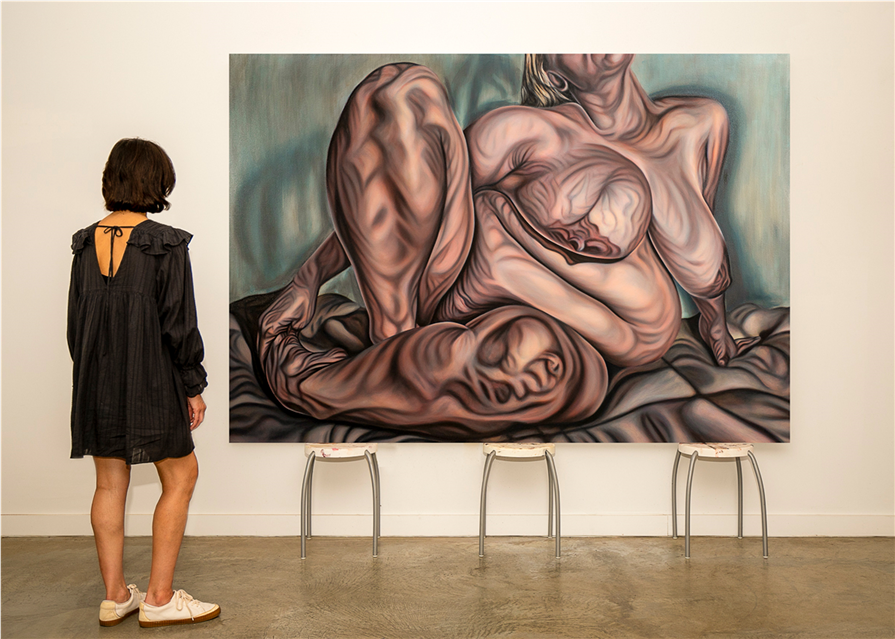
Farid Kia, 2022
Installation view of the exhibition 'Unveiled'
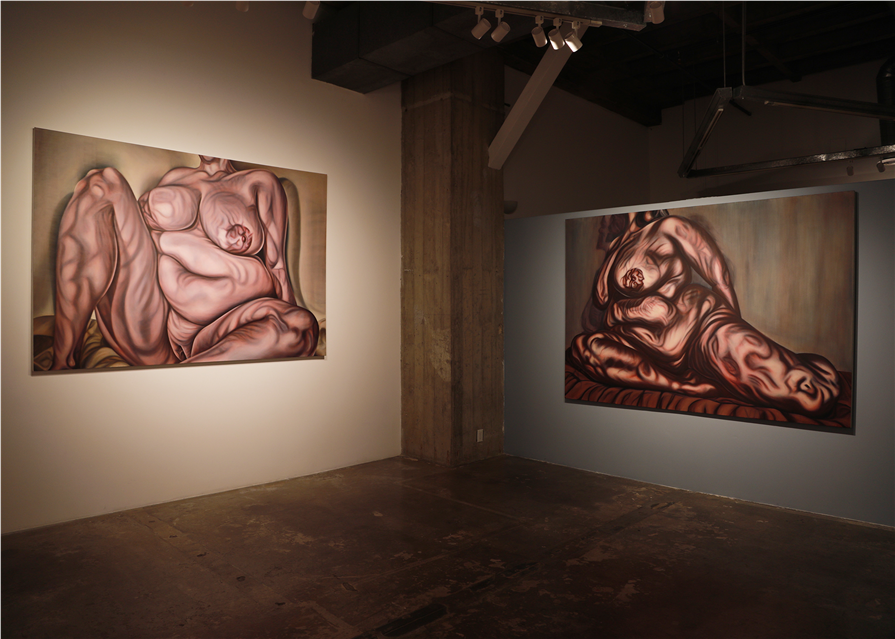
Unveiled, 2023
Installation view at Hamzianpour and kia
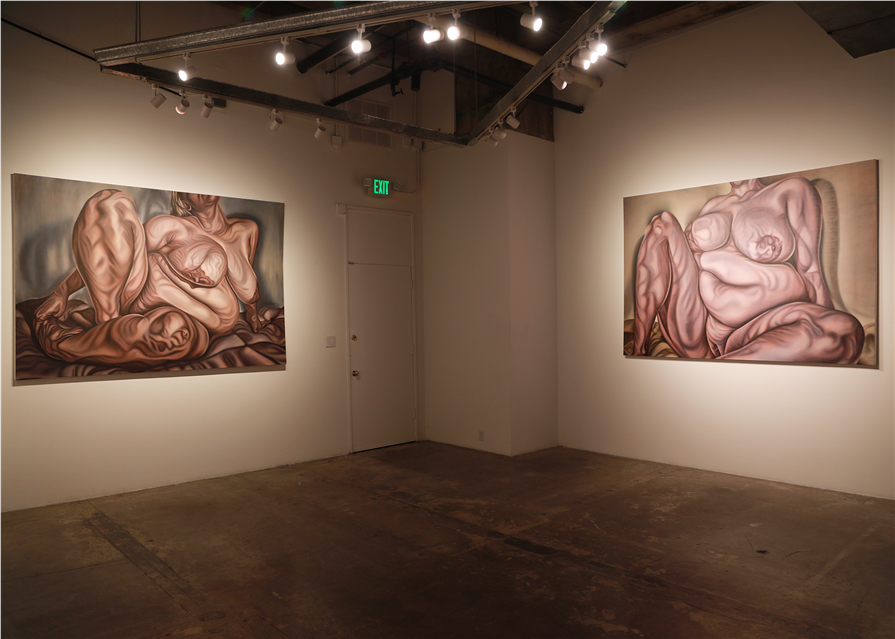
Unveiled, 2023
Installation view at Hamzianpour and kia
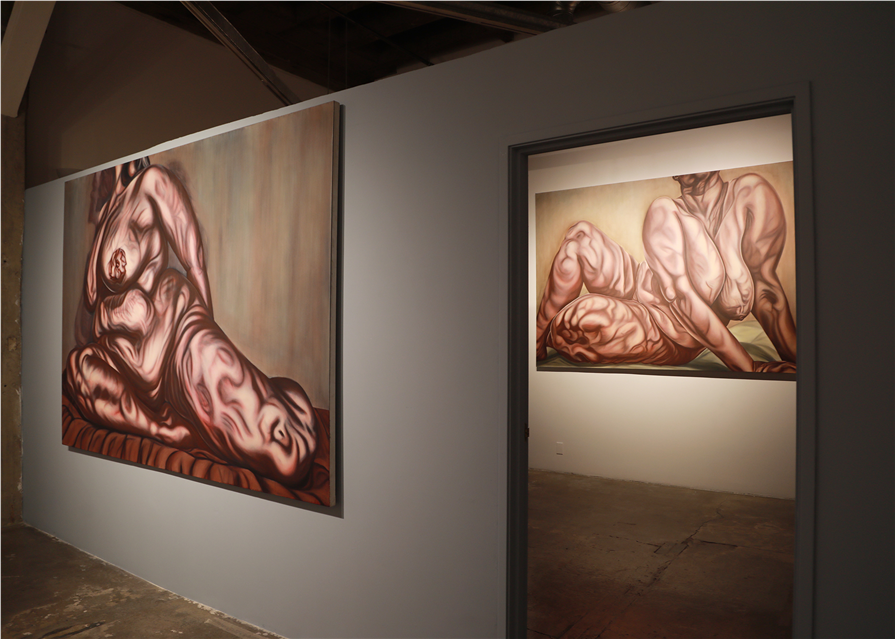
Unveiled, 2023
Installation view at Hamzianpour and kia
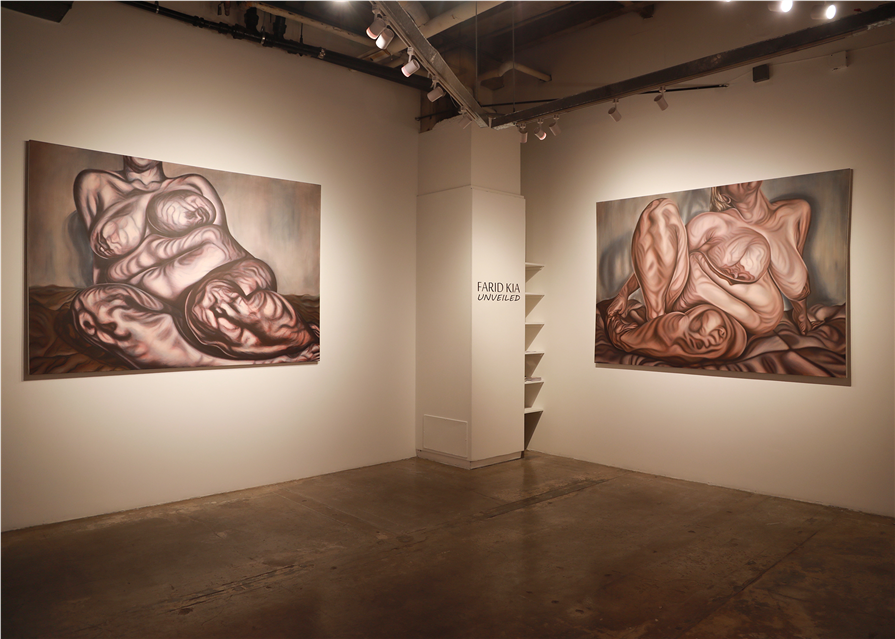
Unveiled, 2023
Installation view at Hamzianpour and kia